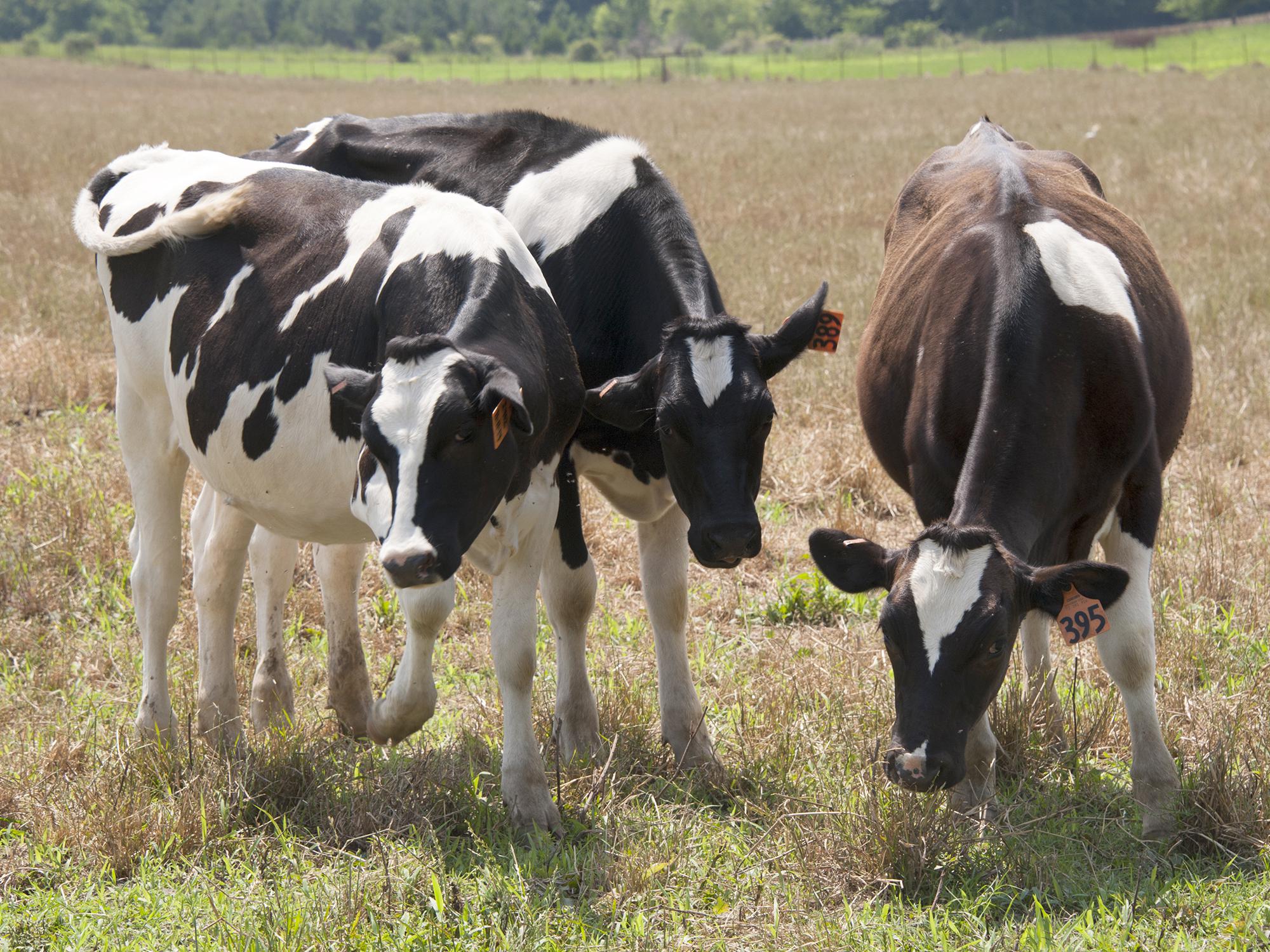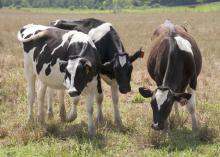Information Possibly Outdated
The information presented on this page was originally released on May 27, 2016. It may not be outdated, but please search our site for more current information. If you plan to quote or reference this information in a publication, please check with the Extension specialist or author before proceeding.
Surplus drives down dairy farmer profits
STARKVILLE, Miss. -- An abundance of cool-season grasses and legumes means plenty of forage for Mississippi dairy cows, but increased nationwide milk production is driving down profits for the state’s producers.
Producers are receiving $12.75 per hundredweight, or about $1.10 per gallon of milk. A year ago, they were being paid just under $20 per hundredweight.
Brian Williams, an agricultural economist with the Mississippi State University Extension Service, said the sharp decrease is driven by supply.
“Higher U.S. production combined with sharply higher European milk production has contributed to what is currently a global surplus,” Williams said. “The price of milk has experienced a linear downward trend since November, when futures were $16 per hundredweight.”
In the first quarter of 2016, Mississippi dairies produced 53 million pounds of milk, nearly 1 billion more pounds compared to the first quarter of 2015.
“Overall U.S. production is expected to be at 212.4 billion pounds,” Williams said, “which is up more than half a billion pounds from last month’s estimate and up from 208.6 billion pounds a year ago.”
Mississippi’s dairy value of production declined about 37 percent last year from 2014 levels to an estimated value of $31.7 million.
Along with decreasing prices for Mississippi dairy producers, the industry is continuing to experience a reduction in the number of dairy farms.
Pike County Extension agent Lamar Adams reported that there are currently 80 dairy farms in the state with an average herd size of 140 milking cows. These numbers reflect the overall industry trend of family farms liquidating herds and going out of business, while the remaining farms operate with larger herds. In 2007, Mississippi had 178 dairy farms.
The nationwide annual production average is 22,000 pounds of milk for each dairy cow. In Mississippi, each cow produces about 14,000 pounds per year due to physiological stress and declining forage quality caused by summer heat.
Spring rains have boosted cool-season forage, providing plenty of ryegrass, small grains and legumes for grazing.
“The wet weather we’ve had across most of the state this spring has been great on winter pastures, so we have very good grazing conditions so far,” Adams said. “However, frequent rain showers in late April and early May hindered the harvest of ryegrass hay, but it has still been a good spring for forage and milk production.”
The same winter and spring weather patterns have also presented challenges for producers, mainly in the Delta, where farms were flooded early this year.
“There have been problems in low-lying pastures where cattle bog and tear up some of the grass while grazing,” Adams said. “These wet and muddy conditions also create additional challenges for dairy farmers in maintaining high quality milk as the exercise additional hygiene practices in the milking parlor to reduce the incidence of mastitis infections.”
Williams said that as the popularity of organic foods continues to rise, producers may cater their practices toward that consumer base as a way to maximize profits.
“Being that a lot of dairy cows in Mississippi are grass fed, it’s an easy transition to go from conventional production to value-added production,” he said. “I wouldn’t be surprised to see more of our producers move in that direction.”
June is National Dairy Month, when consumers are reminded of the nutritional value of drinking milk and the importance of dairy products.




